1990 Titus
Platform: Arcade
Also known as: Fire and Forget 2 – The Death Convoy
Many of you may recall playing Fire and Forget 2 by Titus back in the day, although it was sadly a fairly “forgettable” game on the C64 at least from the author’s point of view.
Something which I had never noticed, and was brought to my attention by Karl Kuras, is that the adverts state that the game was based on the arcade game by Titus – complete with an actual photo of the cabinet too.
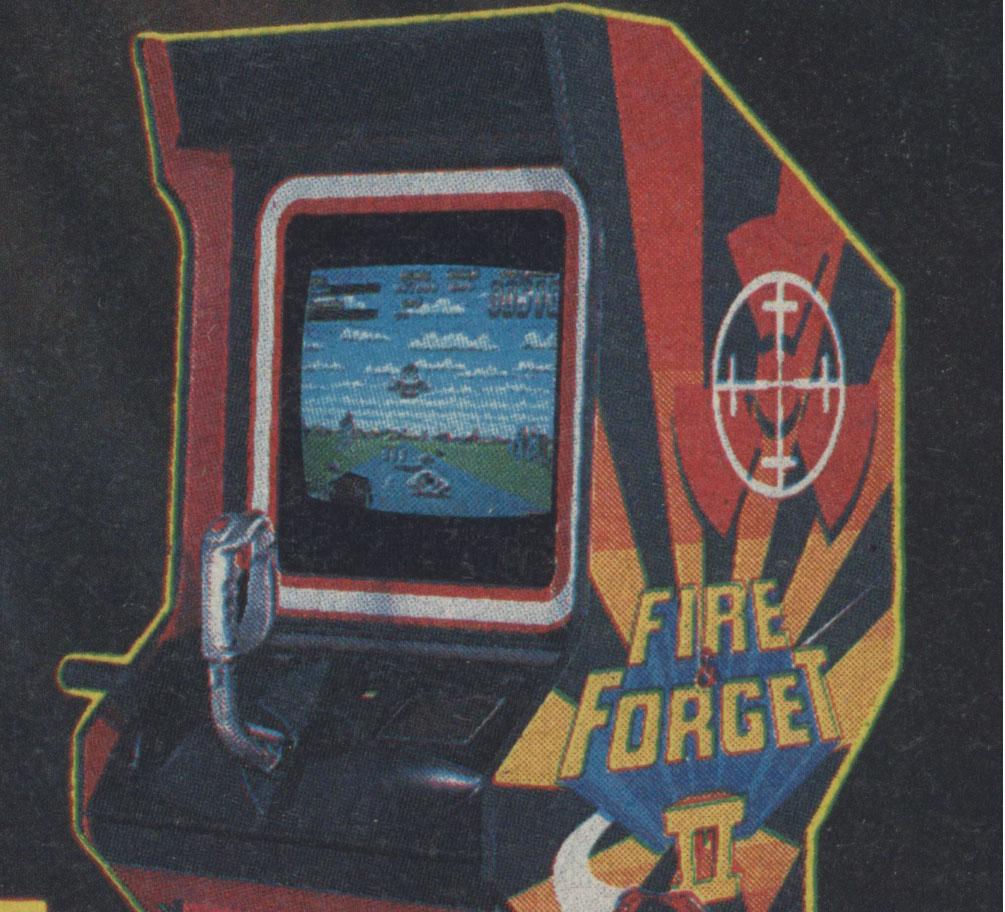 Oddly though, there seems to be no evidence that the arcade ever made it to full production, with nothing in MAME preserved and only placeholder entries on various Arcade databases (with the arcade cabinet photo from the advert).
Oddly though, there seems to be no evidence that the arcade ever made it to full production, with nothing in MAME preserved and only placeholder entries on various Arcade databases (with the arcade cabinet photo from the advert).
So what happened? Did it ever get complete, did it have perhaps a limited release in Europe? And crucially, could something of the arcade actually be found to be properly preserved in MAME? The screenshots within the advert don’t seem to be from any particular platform conversion, so they either seem to be mock ups or are images from the arcade machine itself.
Thanks to contributor MT226 (see comments), it seems that it was proven pretty much that the cabinet was a modified Afterburner: http://web.archive.org/web/20181230214157/https://mamedev.emulab.it/undumped/index.php?title=Fire_%26_Forget_II
The question still remains if the game itself was real, or was it merely just mock ups. It is early days, and first steps will be to try and contact those at Titus at the time to find out more. Thanks to Xyphoe, we learn that there was an Amstrad exhibition in France in late 1990, where the cabinet was on display. It seems to be ring-fenced off, so we’re not sure if it was playable at the event. If you were there, please get in touch!
If this was real, then there is a distinct possibility that the game could have been a modified/hacked version of Afterburner. Titus feasibly done something similar to what GCC did with Pac Man. Maybe Titus did a proof of concept, and then went to SEGA to get permission to release their own “modification kit”? Maybe SEGA refused it?
Curiously though – Fire and Forget 2 was released on the SEGA Master System, the only Titus game that saw release on the platform. Was this a mere co-incidence, or part of a bigger connection? Did Titus have some kind of negotiations going on with SEGA for the game and big ambitions? Many questions still to answer, and too many theories for now ;-)
Hoagie / Abandonware France dug out some great inforamtion, including some additional scans showing a photo of the cabinet at the Amstrad Expo where the cabinet was on display – but without anything being shown.
Oddly, it seems they were also showing other games housed inside arcade cabinets – possibly home computer versions. He also makes a good point that Titus did CD-i work as soon as 1990, and were one of the first European companies to get developing rights on the Master System. They were certainly ambitious, adding fuel that this arcade was real.
If you know anything more, then please do get in touch!
Gallery
Thanks to Grzegorz Antosiewicz and MT226 for finding clearer shots of the arcade from Zero issue 11 and an Amstrad magazine, Xyphoe for the cabinet shots, Hoagie / Abandonware France for the additional information and scans, Ross Sillifant for additional scans and Abandonware Magazines for the article scan.
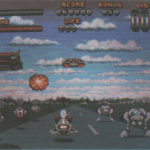
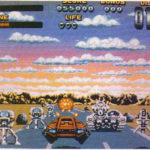
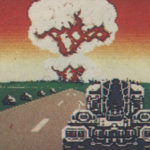

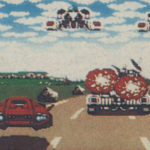
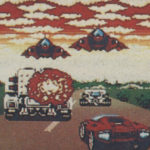
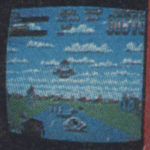
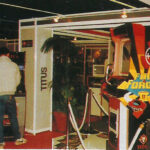


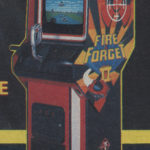
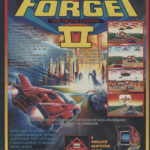
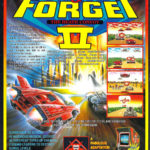

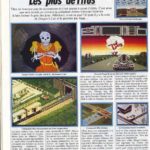
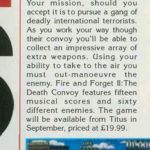



On the one hand, it’s quite plausible, especially when you realize that the news revealing that they were making an arcade “for Japanese market only in a first time” (Génération 4 23 page 122, from where your arcade pic comes from) appeared in June 1990, the same month when Titus started running their French ads saying the game is “a fabulous adaptation of the arcade game”. It wasn’t even in production yet!
On the other hand, Titus made a CD-i version of Titan as soon as 1990 (looks like this one was unreleased too, another mockup/entry?), a CDTV version of Battlestorm, they were one of the three first European companies to get the developing rights on Master System (on which they did reverse engineering), they got a license to publish Nintendo games, so definitely they were trying new things, technologically speaking. Maybe they tried to do an arcade cabinet too.
Now regarding F&F2:
– In Amstrad Cent Pour Cent 28 (07/1990) page 8, there’s a short snippet about this arcade with the same pic, but they say it will be available under the brand Taito.
– In Amstar 52 (12/1990) page 11, there’s a short report of the Amstrad Expo 90 with a closer pic of the Titus booth and the arcade. Its screen is not visible, however we can see that Titus installed arcade cabinets to display their products. Did they show the CPC and GX4000 versions, or did they hide an Amiga in them? (remember it was Amstrad Expo, no Amiga or ST allowed) If these games were playable, it would confirm the engineers at Titus were able to connect computer hardware to cabinets.
On a personal note, I was at this Amstrad Expo, but I had absolutely zero experience or knowledge in video games back then, so I didn’t enjoy it as much as I should have.
Thanks very much Hoagie for sharing your thoughts on this. From what you’ve explained about Titus, it does sound likely that an arcade was in production and it wasn’t a bluff of any kind.
I’ll make a note to update the page asap, including with the scans and new materials (thank you!). It made me smile that you were at the same Amstrad Expo – if only we knew at the time that we’d be looking into this game :)
I’m pretty sure I played this game on this arcade cab in my little town in the south-west of France when I was a child, at the end of the eighties.
It’s proven that the cab is an Afterburner’s modified:
http://web.archive.org/web/20181230214157/https://mamedev.emulab.it/undumped/index.php?title=Fire_%26_Forget_II
Thanks mt226! It is seeming more and more that this was just a mock up overall.
I have found better quality shoot for what is on screen of that arcade cabinet on:
http://amr.abime.net/amr_popup_picture.php?src=zero/magscans/zero11_1990_09/012.jpg&c=74215&n=1&filesize=246717
Look in upper-right part of page, also someone paste wrong screen shoot while writing that preview, Legend of the Lost look different.
Thanks Grzegorz, i’ve just added that onto the page with a credit. Odd they have that screen credited to another game.
An scan decent from the arcade cab, whit a gas pedal:
https://postlmg.cc/dZsxP69y
A suppossed screenshot from the arcade version:
https://postimg.cc/yg8bTj9H
Thanks mt226! Added both to the page with a credit. It’s another different shot too, so if they are mock ups – then Titus went to a fair bit of effort.
First thing I have noticed is different status bar display on upper part of that arcade screen, it is different from every port of that game. On any computers version hud/status bar got solid color background plus some additional details, and here it’s transparent with just different (and less) things to display, two status bars, some small digits and big counter probably for score.
Until we have clarification from someone who work at Titus we can only make assumptions. It could be real arcade game, it could be computer unit put into arcade cabinet with modified game or it could be just some fake marketing stuff like bullshoots with graphics being modified in graphics editor to look more awesome.
So, did the author of the C64 ‘conversion’ ever say that he based it off this arcade machine?
We need to ask them – just put the page up for now and hope to update the page over time.
It would be interesting to know if this was an early attempt at an ‘advergame’?
Never intended to be released in arcades at all but just a promo cab created to generate sales and hype?
One can wonder…
It’s entirely possible! Could have just taken another similar arcade and quickly mocked it up. The screens could well be Amiga mockups as well etc.